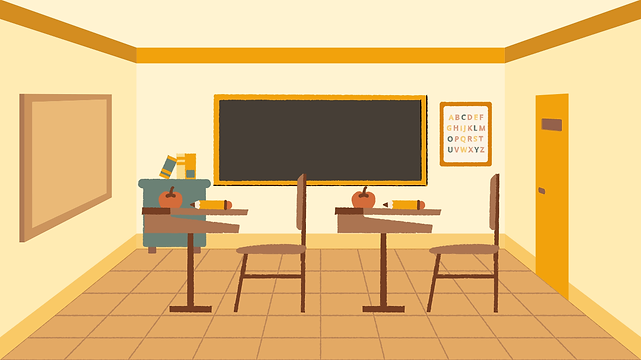top of page
How to Address Different Learning Styles in English Class
Teaching English

How to Address Different Learning Styles in English Class
As an experienced teacher, I've learned that one size doesn't fit all when it comes to teaching English. Students learn in different ways, and it's important to cater to those differences. I've found that understanding and addressing different learning styles can make a big difference in student engagement and success.
Here are some ideas to address different learning styles in your English class:
Visual Learners
- Visual aids: Use charts, diagrams, graphic organizers, images, and videos to help students understand the material. Visual learners often remember things better when they can see them.
- Mind maps: Encourage students to create mind maps. This is a great way for them to organize information and see the connections between ideas.
- Interactive whiteboards: Interactive whiteboards are a great way to make lessons more engaging for visual learners. They can see the information, interact with it, and learn by doing.
- Word walls: Create word walls to help students learn new vocabulary. They can see the words and definitions, and it can help them remember them better.
- Color-coding: Use different colors to highlight important information, categorize concepts, or distinguish between parts of speech. Color coding can help visual learners remember things better.
- Graphic novels and comics: Incorporate graphic novels and comics. These can help visual learners understand complex concepts and stories.
Auditory Learners
- Audiobooks and podcasts: Use audiobooks and podcasts to provide alternative ways to access texts and stories. This can be a great way for auditory learners to learn by listening.
- Class discussions: Facilitate engaging discussions where students can share their thoughts and ideas verbally. This can help auditory learners process and remember information.
- Role-playing and drama: Incorporate role-playing and drama activities. This allows students to use their voices and bodies to express themselves and learn.
- Music and songs: Use music and songs to reinforce vocabulary, grammar, and concepts. Auditory learners often remember things better when they hear them.
- Recitations and poetry slams: Encourage students to practice reciting poems and participate in poetry slams.
- Audio recordings: Have students record their own presentations or readings. This can help them improve their pronunciation and confidence.
Kinesthetic Learners
- Movement activities: Incorporate movement activities like acting out scenes, charades, or physical demonstrations. Kinesthetic learners learn best by doing and moving around.
- Manipulatives: Use manipulatives like building blocks, playdough, or flashcards to represent concepts and ideas. This allows kinesthetic learners to get their hands on the material and learn by doing.
- Hands-on projects: Assign projects that involve hands-on activities, such as creating models, designing posters, or building sets. This gives kinesthetic learners a chance to use their bodies and create something tangible.
- Field trips: Organize field trips to museums, theaters, or historical sites. This provides real-world experiences that kinesthetic learners can connect with.
- Interactive games and simulations: Incorporate interactive games and simulations. These provide active learning opportunities that can engage kinesthetic learners.
- Journaling and reflective writing: Encourage students to express their learning through writing activities that allow for personal reflection. This allows kinesthetic learners to move their hands and process information through writing.
Read/Write Learners
- Traditional reading and writing activities: Provide ample opportunities for reading and writing tasks, such as essays, reports, and research papers. Read/write learners excel at learning through the written word.
- Journaling and reflective writing: Encourage students to keep journals, write reflections, and express their thoughts and ideas in writing. This helps them process information and develop their writing skills.
- Peer editing and feedback: Facilitate peer editing and feedback sessions to help students improve their writing skills.
- Collaborative writing activities: Engage students in collaborative writing projects, such as creating group stories, poems, or plays. This allows read/write learners to work together and share their ideas.
- Note-taking and outlining: Encourage students to practice note-taking and outlining skills to organize information and improve comprehension.
- Vocabulary building exercises: Provide opportunities for students to expand their vocabulary through word lists, games, and activities.
Addressing Multiple Learning Styles
- Differentiated instruction: Implement differentiated instruction strategies to provide different learning opportunities for each student. This means offering different levels of support and challenge for different learners.
- Learning centers: Create learning centers with various activities catering to different learning styles. This allows students to choose activities that best fit their needs.
- Choice boards: Provide students with a selection of activities to choose from, allowing them to engage with the material in a way that suits their learning style.
- Technology integration: Utilize technology tools to provide diverse learning experiences, such as interactive simulations, virtual field trips, and online quizzes.
- Collaborative learning: Encourage collaborative learning activities where students can learn from each other and share their different perspectives.
- Student-led activities: Empower students to take ownership of their learning by allowing them to choose activities, lead discussions, or create presentations.
By understanding and addressing different learning styles, we can create a more inclusive and engaging learning environment for all students. This leads to better understanding, higher engagement, and ultimately, greater success in the classroom.
bottom of page